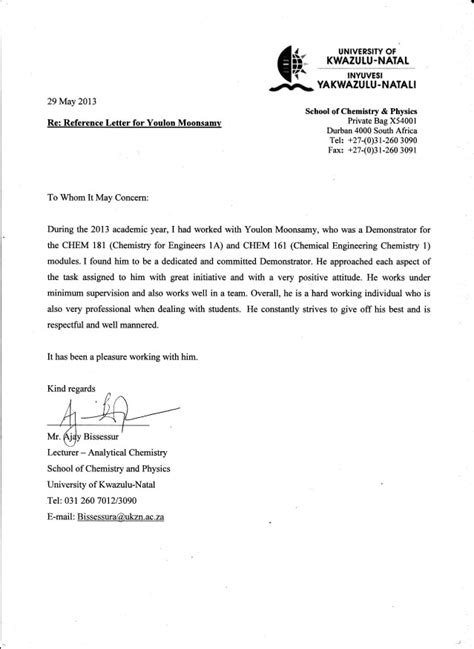How To Write A Reference Letter: Practical Examples In English

Writing a reference letter may seem like a daunting task, but it can be easier than you think with the right guidance. Whether you’re writing a letter of recommendation for a colleague, student, or friend, it’s important to know how to structure the letter and what to include to make it effective. In this guide, we’ll provide practical examples and tips to help you write a reference letter that stands out.
1. Understand the Purpose of a Reference Letter
The first step in writing a reference letter is to understand its purpose. A reference letter is a document that vouches for the character, skills, and achievements of an individual. It’s typically written by someone who knows the person well, such as a supervisor, professor, or mentor, and is used to support their application for a job, school, or other opportunity.
Example:
If you’re writing a reference letter for a former employee, you might say something like:
“I am writing to recommend [name] for [position]. During their time at [company], [name] consistently demonstrated a strong work ethic, excellent communication skills, and a willingness to go above and beyond to meet project deadlines.”
2. Gather Information About the Person
Before you start writing the letter, it’s important to gather as much information as possible about the person you’re recommending. This can include their resume, cover letter, transcripts, and any other relevant documents. You should also ask the person to provide you with a list of their achievements, skills, and accomplishments that they would like you to highlight in the letter.
Example:
If you’re writing a reference letter for a student, you might ask them to provide you with their academic transcripts, a list of their extracurricular activities, and any awards or honors they’ve received. This information will help you to write a more detailed and personalized letter.
3. Use a Professional Tone
When writing a reference letter, it’s important to use a professional tone. This means avoiding slang, humor, and other informal language. Your letter should be well-written, concise, and free of spelling and grammatical errors. You should also use a formal salutation and closing, such as “Dear Sir or Madam” and “Sincerely.”
Example:
If you’re writing a reference letter for a colleague, you might say something like:
“Dear Sir or Madam, I am writing to recommend [name] for [position]. During [his/her] time at [company], [name] demonstrated exceptional leadership skills, a strong work ethic, and a commitment to excellence.”
4. Highlight the Person’s Strengths
When writing a reference letter, it’s important to highlight the person’s strengths and accomplishments. This can include their skills, experience, achievements, and character traits. You should provide specific examples to support your claims and avoid making generalizations.
Example:
If you’re writing a reference letter for a job applicant, you might say something like:
“[Name] is an excellent problem-solver who is able to think creatively and work independently. [He/She] has a proven track record of meeting project deadlines and delivering high-quality work. [His/Her] attention to detail and strong communication skills make [him/her] an asset to any team.”
5. Be Honest and Objective
When writing a reference letter, it’s important to be honest and objective. You should avoid exaggerating the person’s strengths or making false claims. If you’re unable to provide a positive reference, it’s better to decline the request than to write a negative letter.
Example:
If you’re writing a reference letter for a student who struggled in your class, you might say something like:
“While [name] struggled in my class, [he/she] demonstrated a strong work ethic and a willingness to improve. [He/She] was always willing to ask questions and seek feedback. While [he/she] may have had difficulty with some of the course material, [he/she] was always respectful and engaged in class discussions.”
6. Follow the Requested Format
When writing a reference letter, it’s important to follow the requested format. This may include using a specific template or including certain information, such as the person’s contact information and the date the letter was written. If you’re unsure about the format, you should ask the person who requested the letter for guidance.
Example:
If you’re writing a reference letter for a job applicant, the employer may provide you with a template to follow. You should use this template and fill in the required information, such as the person’s name and the position they’re applying for.
7. Close with a Strong Recommendation
When closing a reference letter, it’s important to provide a strong recommendation for the person. This can include a statement of confidence in their abilities, a recommendation for the position they’re applying for, or an offer to provide further information if needed.
Example:
If you’re writing a reference letter for a colleague, you might say something like:
“I strongly recommend [name] for [position]. [He/She] would be an excellent addition to any team and I have no doubt that [he/she] would excel in [his/her] new role.”
Conclusion
Writing a reference letter can be a valuable way to support someone’s career or academic goals. By following these tips and examples, you can write a letter that highlights the person’s strengths and accomplishments and provides a strong recommendation for their future endeavors.
FAQs
What should I include in a reference letter?
A reference letter should include the person’s contact information, the date the letter was written, a brief introduction, a description of the person’s strengths and accomplishments, and a strong recommendation for the position they’re applying for.
How long should a reference letter be?
A reference letter should be one to two pages in length. It should be well-written, concise, and free of spelling and grammatical errors.
How should I address the letter?
You should address the letter to the person or organization that requested it. If you’re unsure who to address it to, you can use a generic salutation such as “Dear Sir or Madam.”
What if I can’t provide a positive reference?
If you’re unable to provide a positive reference, it’s better to decline the request than to write a negative letter. You can politely explain that you’re not able to provide a reference at this time.

